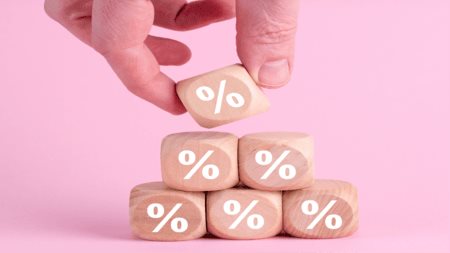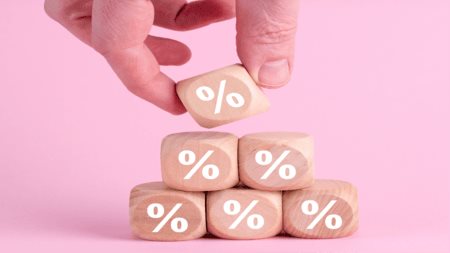THE IMPACT IS NEGATIVE ON THE HOUSING MARKET, AND MAY BE AMPLIFIED A LITTLE BY THE ACCOMPANYING HYPE SURROUNDING THE RATE HIKE
Given all of the hype surrounding the recent 50 basis point interest rate hike,
it would be difficult to argue that there will not be any negative impact on the
property market. This rate hike may have done a little more damage to the market
psyche than the previous couple. Why? Because while the other rate hikes could
be seen to have been almost pre-emptive, undertaken at a time when inflation was
still “under control”, the latest one took place after a surprise April CPIX
inflation figure which breached the 6% upper target limit. Suddenly, many people
seem less sure as to whether inflation is under control, and there thus seems to
be increased concern about where the current rate hiking cycle will end.
Where do I stand? Certainly, given the ongoing strength in the economy, I
would see no cause for panic. I believe that the long term performance of
property markets runs more on economic performance than on interest rates, and
the prospects still remain encouraging. But in the near term, one can’t ignore
the possibility of further negative impact. After all, the cost of the monthly
repayment on a 20-year 100% mortgage loan has increased considerably since the
beginning of the rate hiking phase in June last year. The table below
illustrates this. On a R1million loan the increase in the monthly required
repayment value is only R354 due to the latest 50 basis point rate hike,
assuming a prime rate of interest. However, the cumulative increase since a year
ago has been R1,732 on the monthly payment, which is considerable.
The rate hikes have also contributed a little extra to the repayment value of
an average priced house expressed as a percentage of average income, a ratio
which has already been rising for some years off a very low base.
THE SEGMENTS OF THE RESIDENTIAL MARKET LIKELY TO BE MORE AFFECTED BY RATE HIKES
- The market in close proximity to the coastline is likely to be affected more significantly
than the non-coastal market. This is because of a significant portion of stock
being bought for non-essential holiday purposes. Potential buyers in the holiday
property market have the luxury of being able to hold back for a while to see
what interest rates do next, which can have a significant dampening effect on
the market.
- Additional coastal holiday market pressure implies slightly more
pressure from interest rates on coastal provinces as a whole compared with the
major inland market of Gauteng, where a greater proportion of properties are
arguably for primary residence purposes, and thus where employment and economic
growth are relatively more important drivers. I therefore expect Gauteng,
although it is also currently in a slowing phase, to outperform the coastal
provinces in the near term in terms of capital growth.
- Of the 3 major coastal
provinces, I expect more of an interest rate impact on KZN and the Eastern Cape
than on the Western Cape. The reason is that, especially in the case of KZN, I
believe that the coastal holiday market makes up a bigger proportion of the
total provincial formal housing market than is the case of the Western Cape.
KZN’s and the Western Cape’s economies are similar in size. However, KZN has a
far lower per capita income, and a lower percentage of its total population
falls inside the formal housing market than in the case of the Western Cape.
- The higher-priced end of the housing market is also believed to be more
vulnerable in these times of rate hiking. While home buyers in all segments of
the market are impacted by interest rate hikes, demand for lower end housing can
be better sustained by a certain amount of shift down the price ladder that rate
hiking can encourage. For the very high end, unfortunately there is no higher
price segment from which demand can flow downward to replace clientele lost to
lower price ranges.
- The further interest rate hike may also be a further
negative for the buy-to-let market. For the same reason as in the case of
holiday property, i.e. the non-essential nature of the property from a buyer’s
point of view, potential buy-to-let purchasers can sit and wait out the rate
hiking cycle.
Finally, the interest rate hike may be a further negative for
the development side of the market. Although strong economic growth sustains
middle class growth, and therefore growth in demand for new residential stock,
some developers may not see it that way given the hype around the latest rate
hike and the uncertainty that it creates.
SOME SMALL POTENTIAL BENEFITS The
rental market may ironically be one short term beneficiary of further rate
hiking, as additional households postpone their buying decision until greater
confidence on interest rates has been reached.
NO TREND CHANGES EXPECTED AS A RESULT OF RATE HIKES Despite my belief that the interest rate hiking holds some
negative impacts for the residential market, no major trend changes are
anticipated. This is because the negative impact of interest rate trends began
way back around 2005, where a lack of further cutting post-2003 caused a slowing
in the market as the great 2003 stimulus wore thin. The interest rate hiking
since last year has, therefore, merely supported a trend. We have already seen
average house price inflation on a broad declining trend for over 2 years, with
a seemingly sharper slowdown in the coastal market. In addition, the shift in
strength from the high end towards the low end has also been in full swing for a
while, and on the supply side building completions have been declining mildly
for 2 years. Mortgage advances growth, too, has been on a declining trend. On
the positive side, Trafalgar reported a turn for the better in the rental market
from late last year. Therefore, the expected impact of interest hiking is not
one of any significant trend changes but rather causing the trough in the cycle
to be a little deeper than would have been the case in the absence of rate
hikes. But I keep the expectation of average house price inflation remaining in
double-digit territory over the course of 2007, and I still anticipate the
bottoming out and the start of a recovery in 2008.
POINTERS FOR THOSE WORRIED ABOUT RISING DEBT SERVICING COSTS This section must not be interpreted as
advice, as each person’s financial situation differs, and expert advice should
be obtained from a registered financial planner. It serves rather to name a few
factors that households can consider in their debt planning, given that debt
servicing costs are being driven up by rising interest rates, and given that
home buying for many constitutes a major part of many households’ borrowing.
On the whole, the current level of debt servicing cost is not at crisis levels (for
the household sector in its entirety that is).
The graph shows that the debt
service ratio, i.e. the cost of servicing the entire household debt burden
(interest + capital) expressed as a percentage of household disposable income,
was 9.3% at the end of 2006. The further hike in interest rates, accompanied by
probable further rise in the household debt-to-disposable income ratio, suggests
that the debt service ratio has risen further in 2007 to date, but is still
probably significantly below level of 12%, which represents the approximate
peaks of the last 3 cycles (excluding the abnormal spike of near 14% seen
briefly in 1998). In addition, household borrowing growth is slowing, which
should slow further growth in the household debt-to-disposable income ratio.
Therefore, no major household credit crisis is foreseen in the near term, even
should the SARB possibly hike interest rates for another time.
However, this is
no consolation for those households who are perhaps in a bit of a tight squeeze,
or for some considering entering the property market as new buyers, and for
them, some pointers for consideration are as follows:
- Many of us have more
than one existing loan (including overdrafts on cheque accounts and credit
cards). Very often, the interest rates differ significantly between these
various types of loans. Attempting to repay the one with the highest interest
rate as rapidly as possible would normally make sense.
Consolidation of debt is often possible. If one is able to consolidate
all of one’s debt into one loan and in so doing lower the interest rate of
one’s overall debt burden, this is a further option for alleviating
pressure. Often it is possible to consolidate debt in a mortgage loan, which
can often offer a better rate than other shorter term debt. Once again
though, eligibility varies between individuals/households, but this can be
worth exploring.
Should one’s debt situation be sustainable at
present, and you lean toward the risk-averse side fearing that a further series
of interest rate hikes may lead to trouble, the interest rate fixing option
exists. At present, given market jitters over further rate hikes, one may not
get the most attractive fixed interest rates. But fixing interest rates is not
about making a “profit”. It is about getting greater certainty regarding one’s cashflows, and limiting the risk of further interest rate hiking. One’s appetite
for risk, as well as how much rate hiking one’s financial situation can take, is
important when considering whether to fix or not to fix.
- When considering
increasing one’s borrowing, perhaps to buy a new house, scenario planning is a
useful exercise. Whatever forecasters may predict on the interest rate front,
the only certainty is that Interest rates will at some stage go up and at some
stage go down. Add an extra, say 2 to 3 percentage points onto the current
required monthly payment of a new loan, in a scenario simulation, and ask the
question as to whether you can still afford the loan repayment (NB, given all of
one’s other expenses). If the answer is NO, then some tough choices may have to
be made.
- Buying smaller and cheaper is an option in the case of a house or
motor vehicle for instance. With regard to a house, consider two things. The
best returns on an investment in property don’t necessarily come from buying the
most expensive property in town. They come from the combination of the best
capital growth and income growth, i.e. the emphasis is on growth. At present,
the best capital growth seems to be found at the lower-priced end, although
location remains important. Buying cheaper and smaller may thus also have
investment appeal in many instances, besides saving on debt servicing costs. The
smaller house option may take some persuasion for many South Africans, as many
of our middle class have been used to spacious homes and large stand sizes,
compared to other areas of the world. However, the reality is that urban land
scarcity is mounting, driving up prices, and SA is moving towards a denser
smaller unit/stand size way of life. For many, trying to fight this trend in
future years could be a potential cause of financial strain.
- Finally, it is
also important to consider that buying smaller often means lower household
running and maintenance costs, and ability to service one’s debt is partly a
function of such non-debt expenses too.



